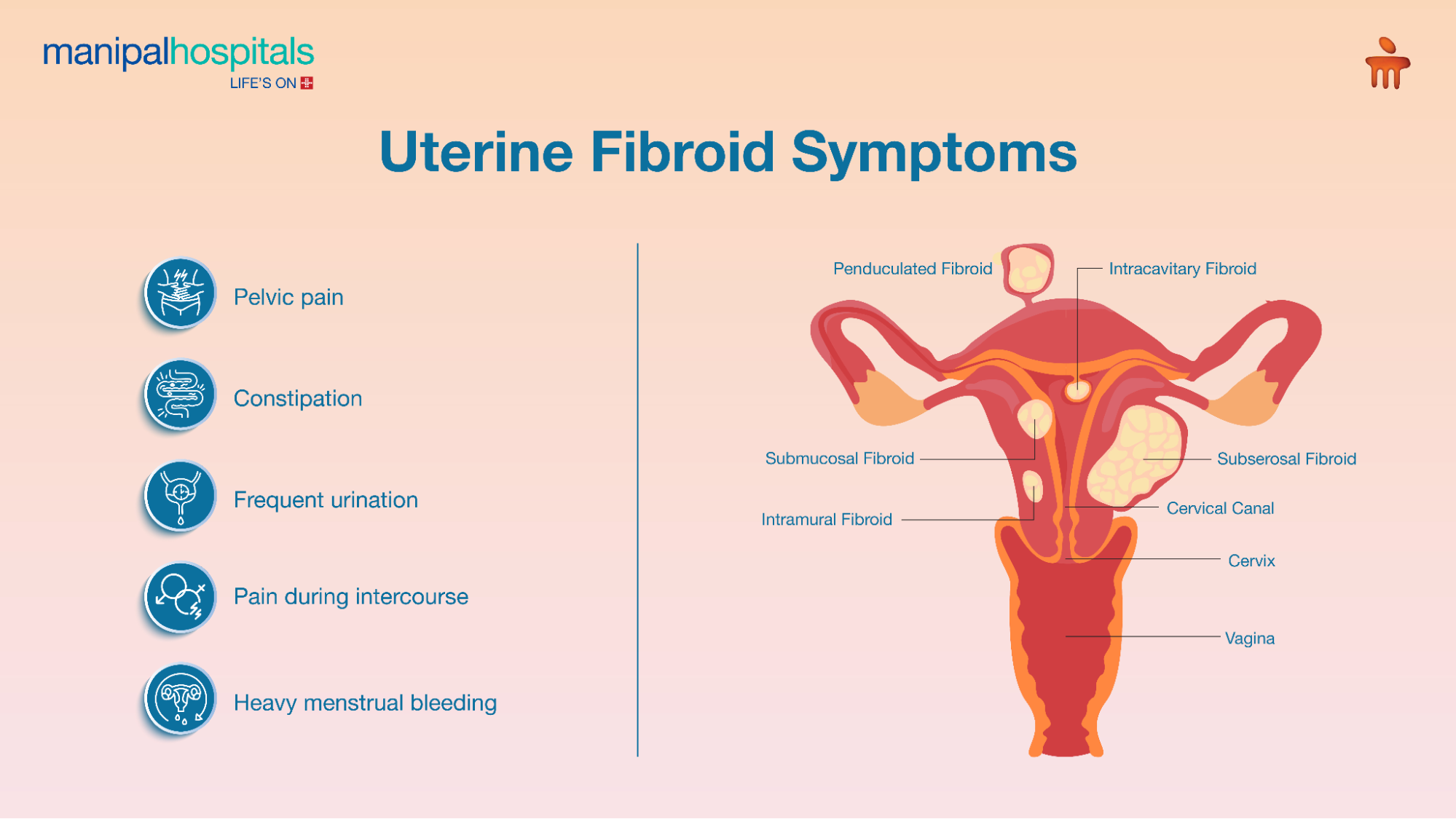
Uterine fibroids are among the most common non-cancerous growths affecting women’s reproductive health worldwide. Often asymptomatic, they can sometimes cause significant discomfort and complications. Understanding what uterine fibroids are, recognising uterine fibroid symptoms early, knowing what causes uterine fibroids, and being informed about effective treatment options for uterine fibroids are vital for women’s well-being. In Ranchi, our experienced gynaecologists provide the highest standard of care, personalised to each woman’s needs.
Synopsis
What Are Uterine Fibroids?
Uterine fibroids, medically termed leiomyomas or myomas, are solid benign tumours made up of muscular and fibrous tissue that develop within or around the uterus. They vary widely in size, from microscopic nodules to large masses that may distort the shape and function of the uterus. Fibroids can grow in different areas of the uterus:
-
Intramural fibroids: Grow within the muscular wall of the uterus.
-
Submucosal fibroids: Protrude into the uterine cavity.
-
Subserosal fibroids: Extend outward from the uterus's surface, sometimes on stalks (pedunculated fibroids).
While uterine fibroids are usually benign and often require no treatment, their size, location, and number can affect the symptoms a woman experiences.
What Causes Uterine Fibroids?
Although the exact cause of uterine fibroids remains unclear, several factors contribute to their development and growth:
Hormonal influence: Estrogen and progesterone stimulate the thickening of the uterine lining and also contribute to fibroid growth. That is why fibroid size often fluctuates during reproductive years and diminishes after menopause when hormone levels fall.
-
Genetic causes: Family history increases the risk, and genetic mutations have been identified in fibroid cells.
-
Growth factors: Certain substances, such as insulin-like growth factors and extracellular matrix proteins, stimulate fibroid cell proliferation and increase firmness.
-
Other influences: Obesity, race (fibroids are more common in African American women), diet, and environmental factors may also play roles.
Understanding what causes uterine fibroids to grow can help in managing them effectively.
Uterine Fibroid Symptoms
Many women with fibroids experience no symptoms, and their condition is only discovered during routine exams or investigations for other concerns. However, when symptoms occur, they can include:

-
Heavy or prolonged menstrual bleeding: This is the most common symptom and can lead to anaemia.
-
Pelvic pain or pressure: Sensation of fullness, discomfort, or pelvic heaviness.
-
Frequent urination or difficulty emptying the bladder: Caused by fibroids pressing on the bladder.
-
Constipation or rectal pressure: When fibroids press on the bowel.
-
Pain during intercourse: Depending on the fibroid location.
-
Menstrual irregularities and spotting: Light bleeding between periods.
-
Enlarged abdomen: In cases of large fibroids.
-
Complications in pregnancy: Such as infertility, miscarriage, or preterm labour.
Women with these symptoms must consult our gynaecologists in Ranchi promptly for accurate diagnosis and management.
Diagnosis of Uterine Fibroids
Diagnosis often starts with a pelvic exam, where abnormal uterine enlargement might be detected. Imaging tests follow, primarily:
-
Ultrasound: The most common and non-invasive method to visualise fibroids.
-
MRI: For detailed mapping, especially before surgery.
-
Hysterosonography or hysterosalpingography: To assess submucosal fibroids affecting the uterine cavity.
-
Hysteroscopy: Direct visualisation of the inside of the uterus using a tiny camera.
Our gynaecologists in Ranchi employ these advanced diagnostic tools to evaluate uterine fibroids accurately.
Uterine Fibroids Treatment
The choice of uterine fibroids treatment depends on symptom severity, fibroid size and location, the patient’s age, and fertility desires. Here are the common approaches offered by our gynaecologists in Ranchi:
Watchful Waiting:
For women without symptoms or with mild symptoms, observation with regular monitoring may be sufficient since fibroids may remain stable or regress, particularly after menopause.
Medication:
-
Certain medications help manage symptoms but do not eliminate fibroids:
-
Hormonal therapies like birth control pills or progestin-releasing IUDs reduce heavy bleeding.
-
Gonadotropin-releasing hormone (GnRH) agonists can shrink fibroids temporarily by inducing a menopause-like state pre-surgery or to relieve symptoms.
-
Non-hormonal drugs address anaemia or pain symptoms.
Minimally Invasive Procedures
Procedures such as uterine artery embolisation (UAE) reduce fibroid size by cutting off their blood supply. High-intensity focused ultrasound (HIFU) is another option that utilises ultrasound waves to destroy fibroid tissue without surgery.
Surgical Treatment
For symptom relief or fertility preservation:
-
Myomectomy: Surgical removal of fibroids, preserving the uterus; can be done via laparoscopy, hysteroscopy, or open surgery, depending on size and location.
-
Hysterectomy: The complete removal of the uterus, which is definitive but reserved for women who do not wish to conceive.
Our gynaecologists in Ranchi guide patients through choosing the ideal treatment, balancing symptom control, fertility goals, and quality of life.
Why Choose Top Gynaecologists in Ranchi for Uterine Fibroids?
-
Expert diagnosis and personalised treatment plans.
-
Advanced imaging and minimally invasive surgical technology.
-
Compassionate care focusing on patient comfort and fertility preservation.
-
Holistic approach addressing physical and emotional health.
-
Comprehensive post-treatment follow-up and support.
If you or a loved one suspects uterine fibroids, consulting with our gynaecologists in Ranchi ensures access to top-notch care with empathetic guidance.
Conclusion
Uterine fibroids are a manageable condition with early detection and expert medical care. Our gynaecologists in Ranchi offer a comprehensive range of diagnostic and treatment services tailored to individual needs. With personalised attention at every step, women regain control over their health and fertility. Don’t tolerate discomfort silently; reach out to our trusted gynaecologists in Ranchi today and receive the care you deserve.
FAQ's
They are benign muscle tumours growing in or on the uterus, varying in size and number.
Hormones like estrogen and progesterone, genetics, and growth factors stimulate fibroid growth.
Heavy periods, pelvic pain, pressure on the bladder or bowel, menstrual irregularities, and fertility issues.
Through pelvic exams, ultrasound imaging, MRI, and sometimes hysteroscopy.
Watchful waiting, medications, minimally invasive procedures, myomectomy, and hysterectomy.





















 5 Min Read
5 Min Read










